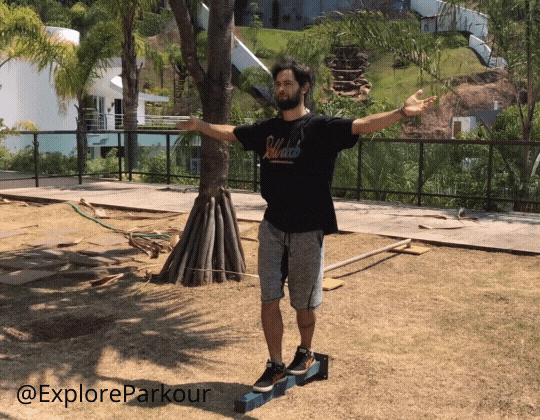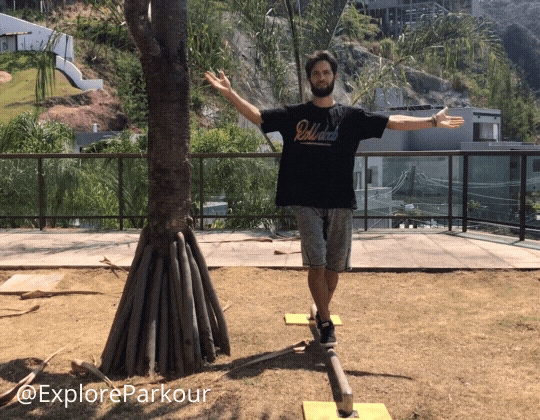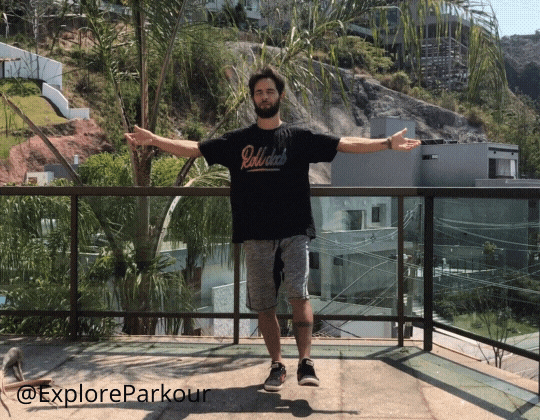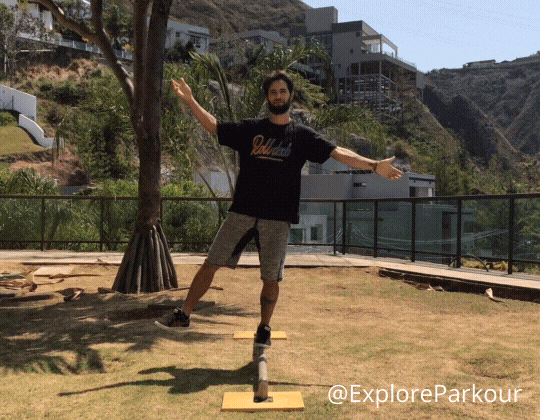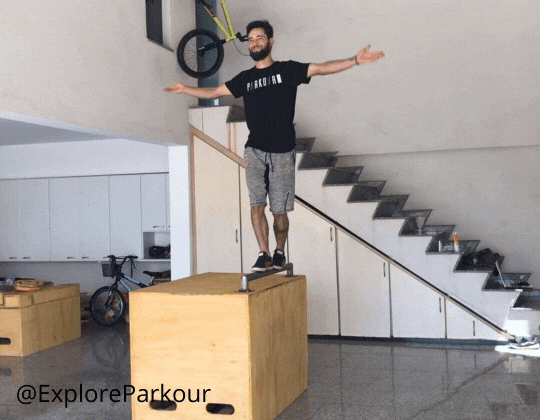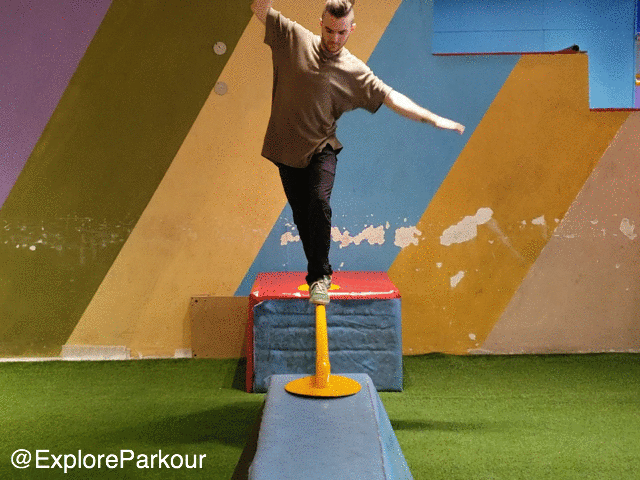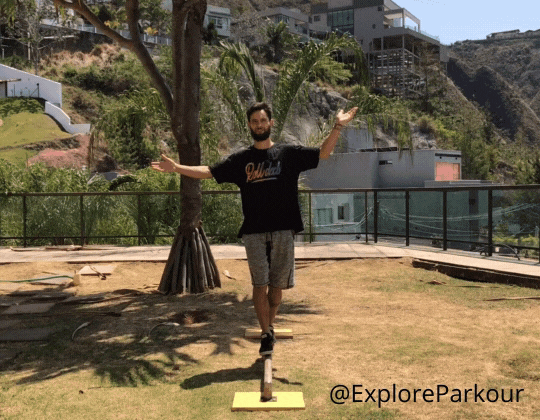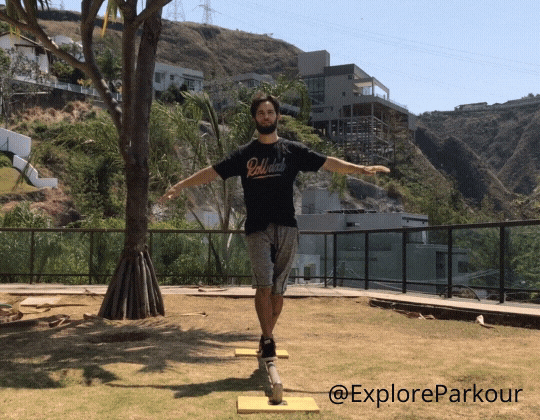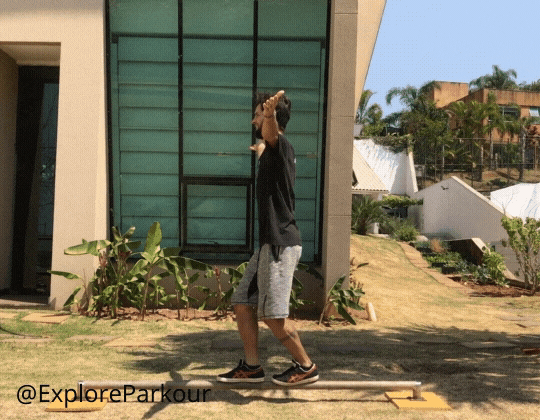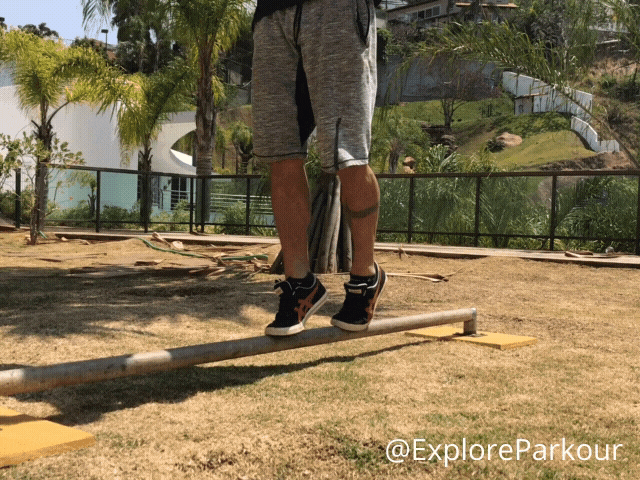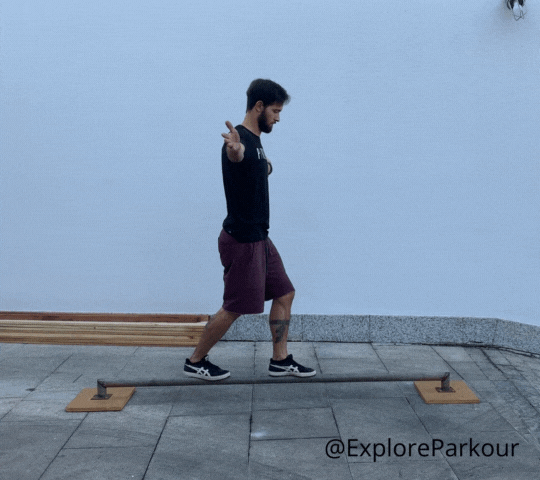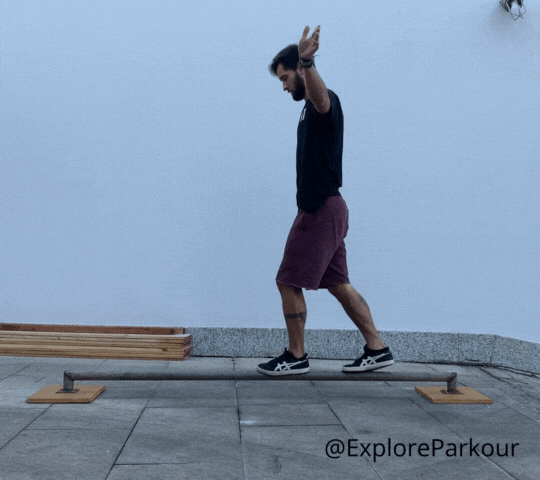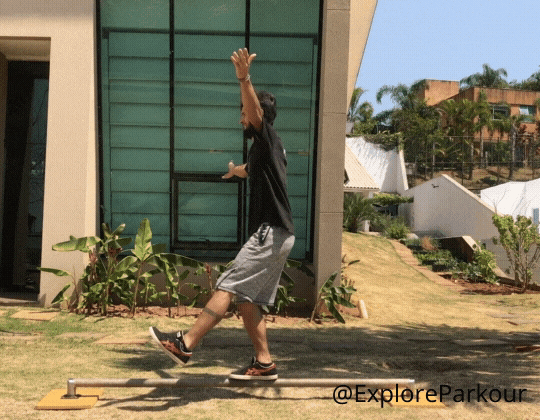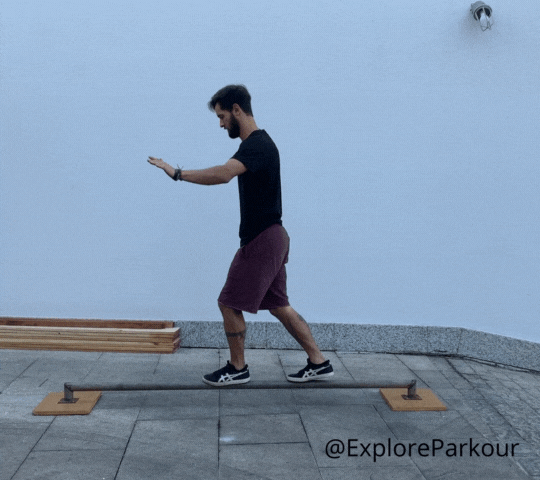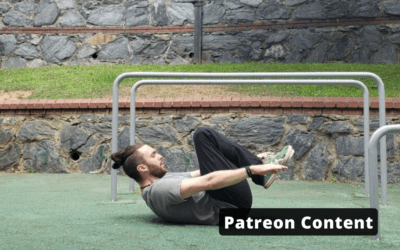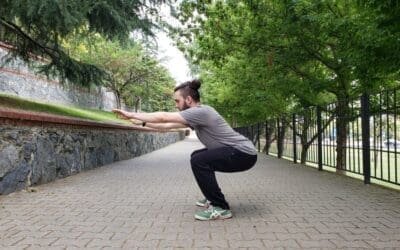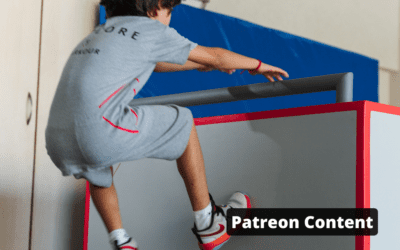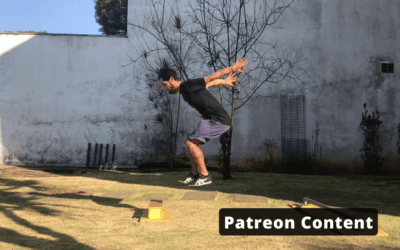Also known as: Parallel balance, Straight balance, Inline balance
Movement Pieces
- Side Shot
- Front Shot
- Foot Placement Shot
- Barefoot Placement Shot
- Counterbalance Shot
- Notes on the Sequencing for Static 2 Feet Inline
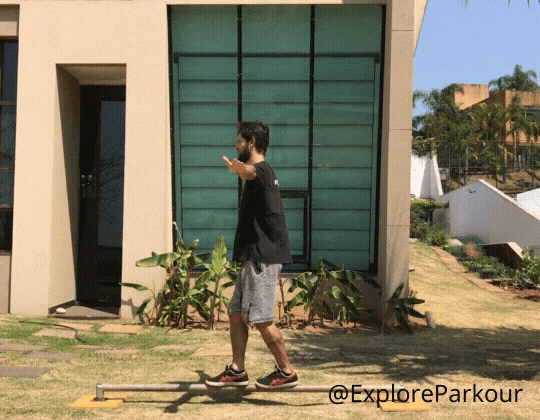

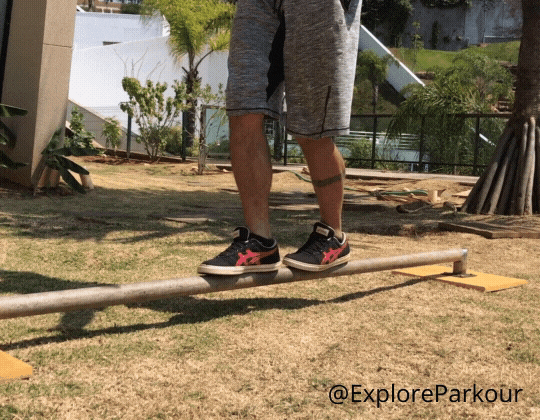
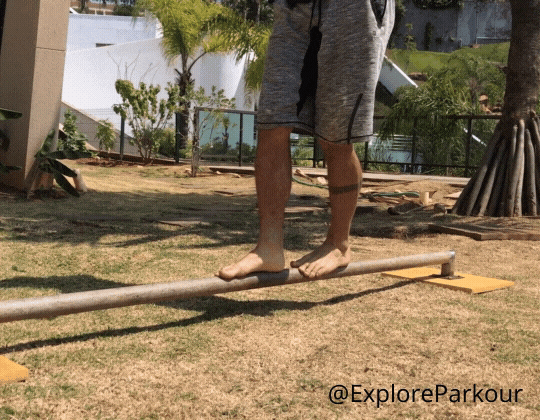
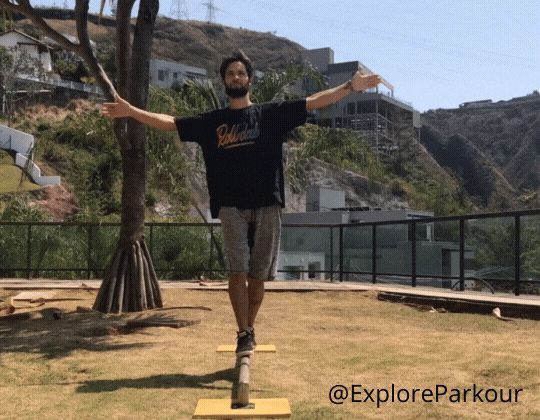

The basic sequence of micro-transitions in this move is…
– There are many ways to go up on balancing obstacles to perform this technique. For now, we will focus on a low, long bar.
– Step up from the side or behind it with your foot lined up from the bottom of your heels to your toes. You should feel the bar in between your big toe and the others. This specific foot placement will help you to get the best out of your ankles and toe strength. Once your foot is in this position begin to pour your weight into the foot that is on the bar and hop with the other foot to get the rest of your weight over that foot.
– Bring the other foot up – in front or behind – on the same position and use mostly your hips, arms, and/or knees to counterbalance yourself with smooth and small movements. The knees should be bent just enough so you can use your legs and torso muscles properly.
– Aiming your vision on a static spot either a couple feet (1m) ahead or at the end of your bar (if it is far enough) can be helpful as a reference to keep yourself balanced.
– Make sure you have enough practice before performing this technique at height.
Common Problems
- Crooked Foot Placement
- Poor Arms Counterbalance
- Crooked Barefoot Placement
- Torso not Engaged
- Legs too Straight
- Rough Counterbalance
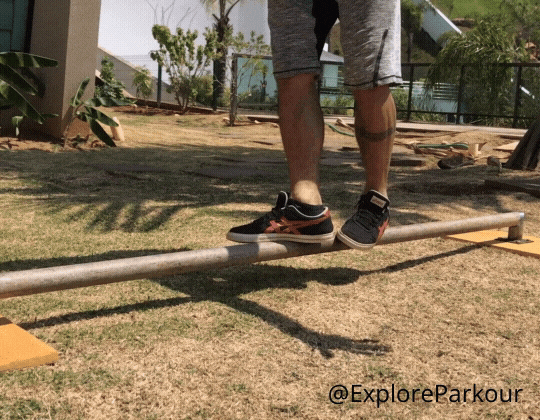
When your feet aren’t lined up with the bar you have less area of contact to support your weight. You also loose the grip and strength that your toes can give you when placed properly. Both things can contribute to make the balance harder. Even though it may feel awkward at first, try getting comfortable with your feet in line as it will give you more control for static and slow moving balancing.
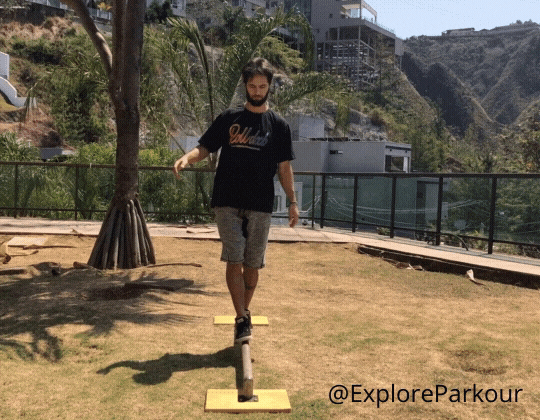
Here you’re not getting the best help out of your upper limbs. You have a lot more to play with your arms so feel free to explore and see how they can help you. Placing your arms at the level of your shoulders can be a good position to start and from there you can smoothly adjust them to keep yourself on the bar.
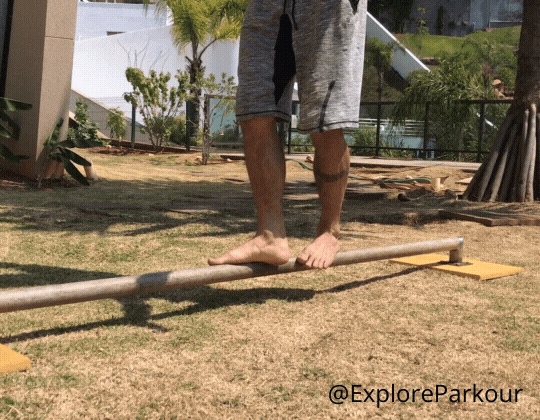
Here you can see toes and ankles not placed properly on the bar. Usually ankles are externally rotated but it can happen that one or both feet are internally rotated as well. To perform a static inline balance, this isn’t the best option. try to keep a nice relatively straight line for your ankles so you can move them internally and externally to maintain balance.
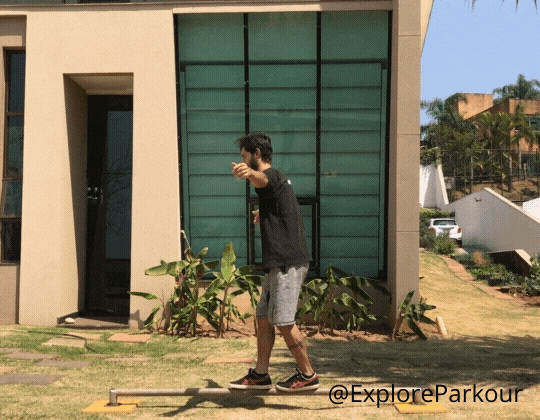
This might make you to lean your chest forward/down too much – or even backwards/up, which will overload one of your legs and disturb your balance control. A relatively straight posture with abs, hips and back muscles slightly activated will help your center of gravity to line up above the bar and help you counterbalance your weight with more control when you need it.
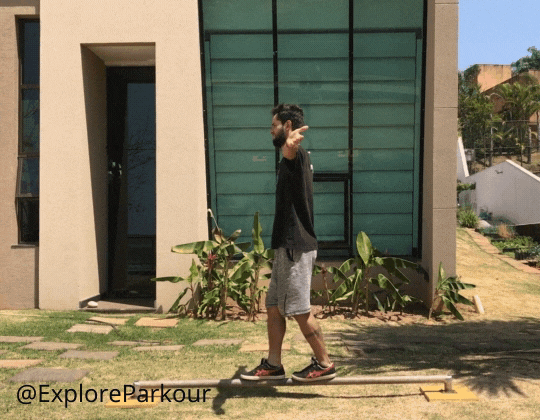
Knees straight and locked won’t let you use your quad muscles properly. In fact, beside losing some muscle activation, you’re also leaving yourself without your knees to aid in your balance. Start by bending your knees just a little to see how it feels. With a few tries you will notice your leg muscles working more and your counterbalance range of motion increasing.
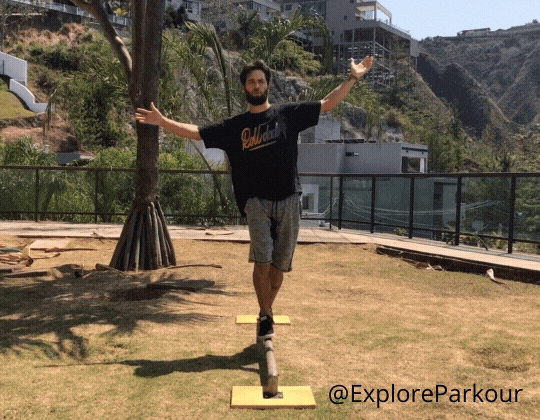
Many things can contribute to this problem. You can try a different spot to focus your vision on, a more relaxed or tensed body position and/or aim to keep a smooth breathing rhythm. Remember to perform smooth transitions with your counterbalancing movements. Beside that just be patient with it and it will come with time and practice.
Related Exercises
Tuck Up
Where should I feel this Exercise? Abs and hip flexors predominantly. Can also use the shoulders and pecs a bit for the arm movement. What’s the Main Purpose? Helps develop power for jumps, flips and other movements (like the cat pass) that require an explosive...
Squat
Where should I feel this Exercise? Quads, Hamstrings, Glutes, and slight tension in your abs are the goals here. What’s the Main Purpose? The squat is great for understanding body alignment with your back and knees for the more high impact movements in Parkour. It...
Run
Where should I feel this Exercise? Generally you can feel this movement in your shin muscles, calf muscles, hamstrings, quads, hip flexors and glutes. It's a great full lower body exercise that also will challenge your breath control and your cardio. What’s the Main...
Related Techniques
Cat Leap
Also known as: Cat, Arm Jump, Cat JumpMovement Pieces The basic sequence of micro-transitions in this move is… - Like a Precision Jump, start with your toes at the edge of the obstacle. Squat - close to 1/3 - and bring your arms down and back as you lean forward -...
Cat Pass
Also known as: Kong, Monkey Vault or Saut de Chat.Movement PiecesThe basic sequence of micro-transitions in this move is… - Choose a stable obstacle close to your hip height, with short width and enough space to place your hands on the top. - Give yourself enough...
Plyometric Jump
Also known as: Plyo, Bounce, Double jump.Movement Pieces The basic sequence of micro-transitions in this move is… - Half way through your take off movement (which here is a precision jump but it can be many other techniques) bring your arms back and keep your torso...

